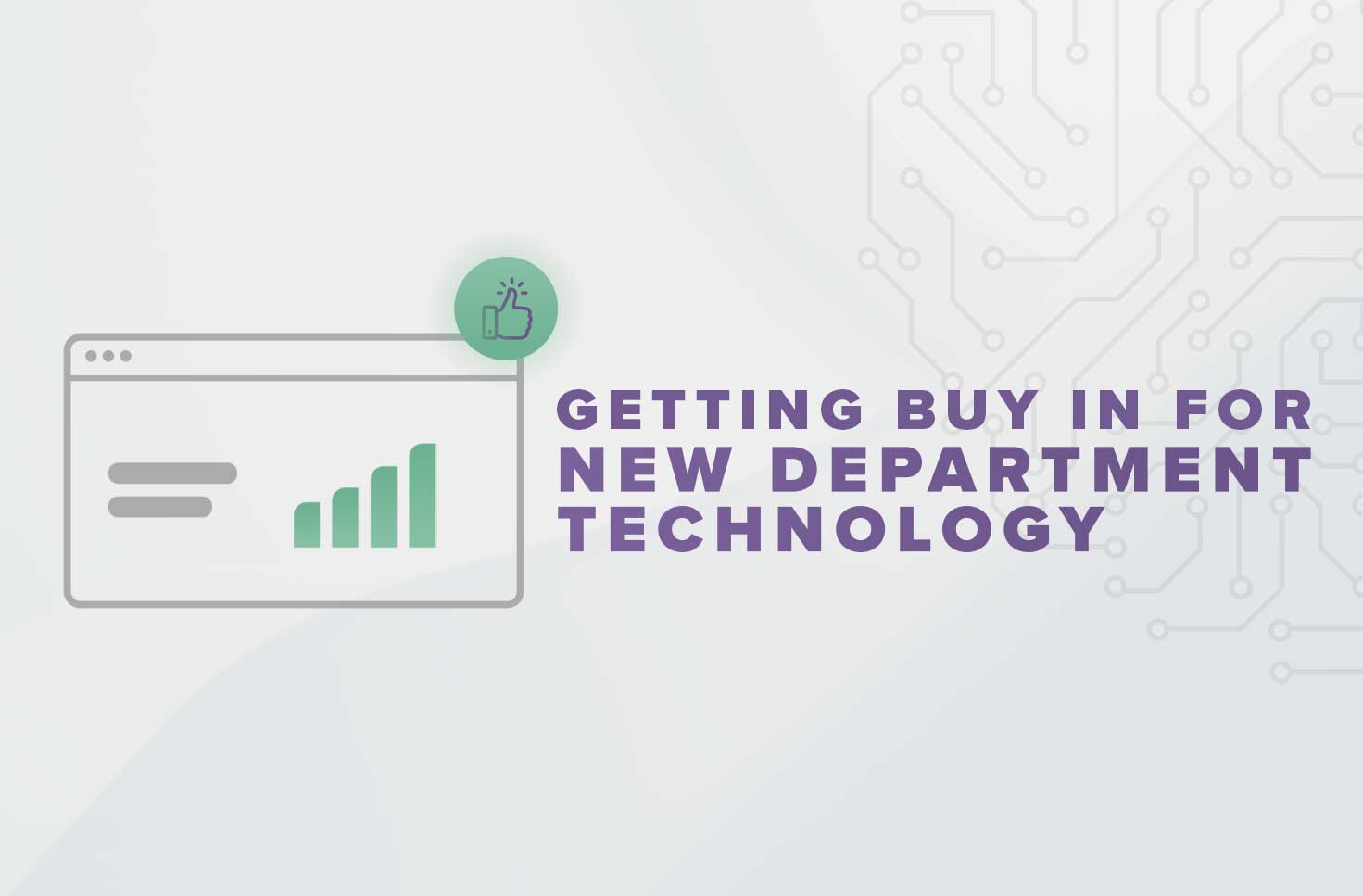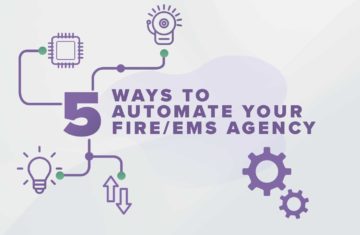Getting Buy-in For New Department Technology
A recent article we produced talked about five ways to incorporate automated systems into a fire/EMS agency’s mission-critical workflows. These new technologies are essential, but getting buy-in for new department technology can take some finesse. Many agency members are often skeptical when they hear terms like IoT or cloud-based solutions. Often, agencies assume that new technologies only affect their IT department, not the agency as a whole. In reality, if a new system or software is relevant to your operations, and supports your agency’s goals and mission, it can mean improvements within the entire agency. If you are considering adopting or are currently implementing new technology solutions, consider these strategies for finding champions to commit to that change.
1. Include a variety of stakeholders and staff in the conversation from the start
Make your goals clear and be transparent. The objective here is to get feedback and support. It is important to include your agency’s stakeholders when deciding on, preparing for, and adopting new technology. In addition to including leadership, you will want to include the staff who will be using the solution or affected by the change. You should work with staff to understand their workflows, tasks, priorities, and projects. You’ll want to get as much feedback as possible so that you can understand how new technology will affect their work. Including a wide range of voices early in the process gives people an opportunity to share their concerns and perspectives. This strategy also entices people to get invested in the pending change.
After you decide on the technology and throughout the adoption, continue to work with your stakeholders and staff to understand their needs, and gain insight into what they think about the technology. You can use this time to brainstorm a roll-out strategy as well.
2. Identify and articulate how the new technology supports the agency’s mission and goals
The goal for all fire and EMS agencies is consistent and clear — save more lives and reduce the risks for first responders. Transitioning to new technology can be frightening when the stakes are so high. It is easy to see why agencies can be reluctant to adopt new technology. To address this reluctance, use empirical evidence from case studies or other resources to show how the technology achieves those same goals of improving operations and minimizing risks. If you can offer data on how the agency will benefit from innovation and meet its goals and mission, you will convince a wider range of stakeholders.
3. Provide real-life examples and case studies to highlight the value of the new technology
To persuade your team, provide examples of agencies similar to your organization who have achieved positive results from adopting a comparable solution. Look at how other agencies used the solution to solve specific problems. Show your staff what is possible. These examples can also give you insight into roll-out plans, pain points in implementations, contingency plans, and other factors to consider when planning for your agency’s adoption and roll-out.
4. Be sensitive to timing in the context of budget constraints and other priorities
Budgets for fire/EMS agencies are notoriously tight and funds are strictly allocated. If your agency is looking for new technology, it is critical that it meets requirements and that you get bids for it before a new budget year starts. Gathering this information often takes time. It is also important to have the detailed costs for an implementation layed out so that as soon as the new budget year starts, funds can be allocated immediately. Once again, this is why it is critical to get stakeholders involved early on. If you have the support of people in your agency before a new budget year begins, you have time to document all of the requirements properly, which leads to a smoother buying decision.
5. Establish strategies for a phased-in approach and have a back-up plan
Successful adoption of a new technology takes time, patience, and a well thought out plan specific to what will work best for your agency. For example, it may be advantageous to phase in a new technology with a smaller sample of users instead of rolling out the change for everyone all at once. Using this strategy will give your agency time to monitor what is working and what needs adjustment. It also allows you to see how long it takes users to ‘get up to speed’ and document best practices. This smaller group can also help you by advocating the change to the larger population of users once it is time for full-scale adoption.
As Mark Wallace, (retired Chief Fire Officer from McKinney Fire Department in Texas, and author of Fire Department Strategic Planning: Creating Future Excellence – 3rd Edition), points out, “Firefighters will always be skeptical of a new technology that will replace an old, but tried-and-true, process. About 10% of them will be early adopters of such a new change. Another 10% will never willingly adopt anything new even if great things are promised. The other 80% will eventually get there after they can try it out before it replaces the old procedure or process.”
A phased-in approach for implementation also gives you time to layout a contingency plan in case adjustments are required. Having a backup plan in place while the technology is modified will keep everyone focused and able to perform their jobs until the modifications are complete.
6. Point out the ‘cost-avoidance’, or the money the agency will save, if the technology helps retain responders and staff (by keeping them healthier and safer) and mitigate risks to the community you serve
Technology can accomplish a number of things. For example, it can reduce stress and anxiety of first responders and lead to higher retention rates (in the case of Locution Systems solutions). It can also extend a community’s precious resources by improving response times. With these gains, your agency can avoid costs associated with low retention rates, work-related accidents, disaster recovery, and more. When looking at adopting new technology, think of it as an investment in what you can save in the long run. If you can show that these monetary benefits outweigh the costs of the technology, you will gain support.
Retired Fire Chief of Prince George County and Executive Editor of FireRescue1.com. commented, “Embracing technologies that make our business and our work safer, and [that] allow us to go farther and longer in informed environments, will ultimately allow us to save more lives (including our own) and protect more property.” He goes on to say, “Chiefs MUST take the lead to both remember the traditions and learn from the past while embracing technological advances that will improve both the cost-effectiveness and efficiency of our performance capacities.”
7. Provide training that meets leadership, responders, and staff ‘on their turf’
Instead of side-lining your staff and leadership with endless hours of in-class or Webex training, think of alternative methods to train that don’t take people away from their jobs. This strategy will make the roll-out go more smoothly and you will find adoption of future technologies easier. Consider just-in-time or on-the-job training sessions. If appropriate, conduct one-on-one or smaller group training sessions, where users can learn by applying the new technology to real-work situations.
Conclusion
It’s natural for agency members to be reluctant to adopt a new technology when the current processes are tried and true. To get buy-in from them, it is important to convey how the new technology and your collective ability to adapt to change will improve your agency’s performance. It certainly takes a lot; you need patience, ongoing communication, and most importantly, a wide range of stakeholders to make the adoption of a new technology successful. However, the benefits undoubtedly make it worth the effort.



